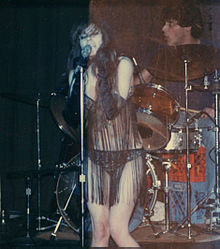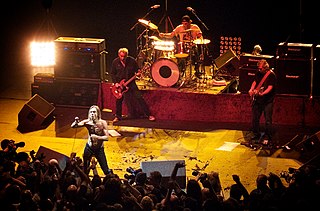
The Stooges, originally billed as the Psychedelic Stooges, also known as Iggy and the Stooges, were an American rock band formed in Ann Arbor, Michigan, in 1967 by singer Iggy Pop, guitarist Ron Asheton, drummer Scott Asheton, and bassist Dave Alexander. Initially playing a raw, primitive style of rock and roll, the band sold few records in their original incarnation and gained a reputation for their confrontational performances, which often involved acts of self-mutilation by Iggy Pop.
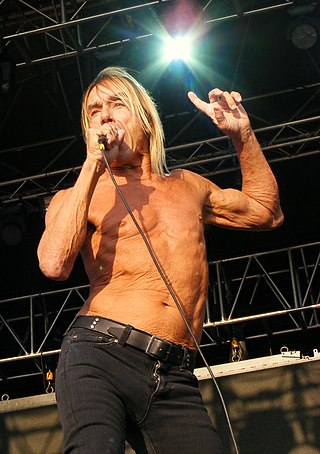
James Newell Osterberg Jr., known professionally as Iggy Pop, is an American singer, musician, songwriter, actor, and radio broadcaster. Called the "Godfather of Punk", he was the vocalist and lyricist of proto-punk band The Stooges, who were formed in 1967 and have disbanded and reunited many times since.

Raw Power is the third studio album by American rock band the Stooges, released on February 7, 1973 by Columbia Records. The album departed from the "groove-ridden, feel-based songs" of the band's first two records in favor of a more anthemic hard rock approach inspired by new guitarist James Williamson, who co-wrote the album's eight songs with singer Iggy Pop. Though not initially commercially successful, Raw Power gained a cult following in the years following its release and, like its predecessors The Stooges (1969) and Fun House (1970), is considered a forerunner of punk rock.
The music of Michigan is composed of many different genres. The city of Detroit has been one of the most musically influential and innovative cities for the past 50 years, whether in Michigan or anywhere else in the United States. Impressively, for 48 straight years (1959–2007) a greater Michigan-area artist has produced a chart-topping recording. Michigan is perhaps best known for three developments: early punk rock, Motown, and techno.

Ronald Franklin Asheton was an American musician, who was best known as the guitarist, bassist, and co-songwriter for the rock band the Stooges. He formed the Stooges along with Iggy Pop and his brother, drummer Scott Asheton, and bassist Dave Alexander. Asheton, once ranked as number 29 on Rolling Stone's list of 100 Greatest Guitarists of All Time, is currently ranked at number 60.

Fun House is the second studio album by American rock band the Stooges. It was released on July 7, 1970, by Elektra Records. Though initially commercially unsuccessful, Fun House developed a strong cult following. Like its predecessor and its successor, it is generally considered integral in the development of punk rock.

Metallic K.O. is a live recording by American hard rock band The Stooges. In its original form, the album was purported to contain the last half of a performance at the Michigan Palace in Detroit, on February 9, 1974—the band's final live performance until their reformation in 2003. The performance was notable for the level of audience hostility, with the band being constantly pelted with pieces of ice, eggs, beer bottles and jelly beans, among other things, in response to Iggy Pop's audience-baiting.
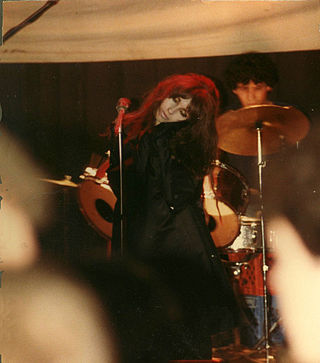
Destroy All Monsters was an influential Detroit rock band existing from 1973 to 1985, with sporadic performances since. Their music touched on elements of punk rock, psychedelic rock, heavy metal and noise rock with a heavy dose of performance art. Their music was described by Lester Bangs as "anti-rock". They earned a measure of notoriety due to members of The Stooges and MC5 joining the band, and Sonic Youth singer/guitarist Thurston Moore compiling a three compact disc set of the group's music in 1994.
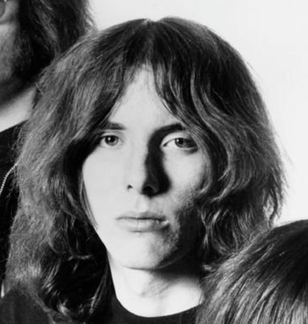
David Michael Alexander was an American musician, best known as the original bassist for influential protopunk band The Stooges.

Scott Randolph Asheton was an American musician, best known as the drummer for the rock band the Stooges.
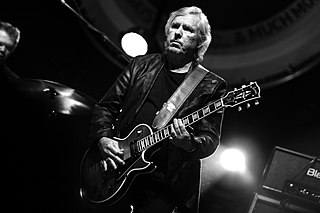
James Robert Williamson is an American guitarist, songwriter, record producer and electronics engineer. He was a member of the iconic proto-punk rock band The Stooges, notably on the influential album Raw Power and in the reformed Stooges from 2009 to 2016. Between his stints in music, Williamson worked in Silicon Valley developing computer chips. Most recently he has continued as a solo artist.

"Search and Destroy" is a song by American rock band the Stooges, recorded for the group's third album Raw Power (1973). Lead singer Iggy Pop said that the title was derived from a column heading in a Time article about the Vietnam War. In 1997, "Search and Destroy" was remixed and remastered by Pop and Bruce Dickinson. The result was far more aggressive and stripped down than the original release, which had been mixed by David Bowie.
Dark Carnival may refer to:
New Race was a Detroit rock–styled supergroup based in Sydney, Australia, formed in April 1981. New Race was a concept band featuring three members of Radio Birdman: Deniz Tek, Rob Younger, and Warwick Gilbert, along with their inspirational mentors: Ron Asheton of The Stooges, and Dennis "Machine Gun" Thompson of MC5.
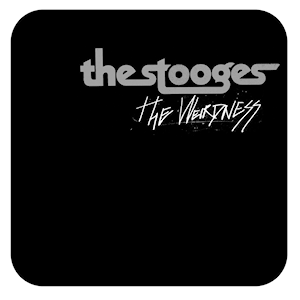
The Weirdness is the fourth studio album by American proto-punk band The Stooges. Released on 5 March 2007, it was the first Stooges album of new material since Raw Power in 1973, and is also the final album to feature guitarist Ron Asheton, who died in early 2009. Founding members Iggy Pop (vocals), Ron Asheton (guitar), and Scott Asheton (drums) are featured, along with new band member Mike Watt, formerly of Minutemen, and returning guest musician Steve Mackay (saxophone), who appeared on The Stooges' 1970 album, Fun House.

Live in Detroit a 2004 DVD release of a live performance by the band The Stooges. The surviving original members of the Stooges reunited in 2003—nearly thirty years after they had disbanded—and scheduled a handful of live shows, including an August 14 concert in their hometown of Detroit. The gig was postponed due to a widespread North America blackout, but the band played at the DTE Energy Music Theatre eleven days later. The performance was released on DVD in March 2004.
Thomas "Zeke" Zettner was a member of the American rock band the Stooges. Zettner had originally been a roadie for the band, but replaced original Stooges bassist Dave Alexander after their second album Fun House until the end of 1970. Alexander's drinking problem had made him an unreliable performer. Jimmy Recca soon replaced Zettner as bass player.
The Hitmen are an Australian hard rock band formed in November 1977 by long-term members, Johnny Kannis on lead vocals and Chris Masuak on lead guitar as Johnny and the Hitmen. The group went through numerous line up changes in its first run from 1977 to 1984. They regrouped under a new name, Hitmen DTK, between 1989 and 1992. They have issued three studio albums, Hitmen, It Is What It Is and Moronic Inferno. The Hitmen reformed in 2007; Masuak left in 2015.

The discography of The Stooges—a Detroit, Michigan based rock band founded by "The Godfather of Punk Music" Iggy Pop as singer, Ron Asheton as guitarist, Dave Alexander as bass-guitarist and Scott Asheton as drummer—currently consists of five studio albums, twenty-four singles, four live albums, and three box sets.
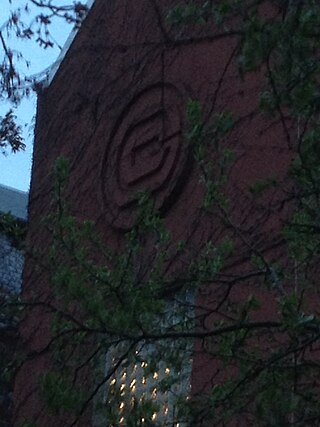
C-Pop Gallery was a metro Detroit art gallery that operated from 1996 to 2009.
